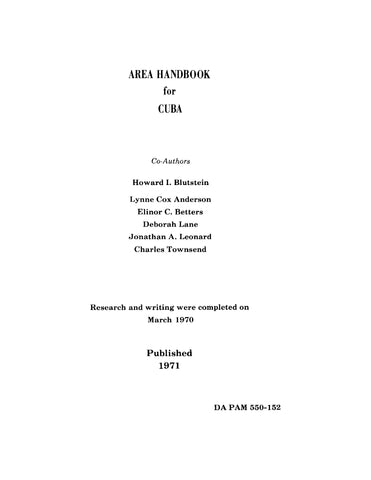
CUBA: Area Handbook for Cuba
by Howard I Blustein et al. 1971. 505p
Cuba's economy was historically dominated by sugar and tobacco, with limited industrial development. The 19th century saw the rise of nationalist movements that sought autonomy or independence from Spanish colonial rule, culminating in the Cuban War of Independence. Following the 1959 Revolution, significant land reforms were implemented, redistributing property and impacting medium-sized farmers.
By 1968, Cuba's population was approximately 8 million, with a notable trend of urban migration as people moved to cities for better opportunities. The demographic landscape of Cuba is diverse, characterized by a mix of descendants from Spaniards, Africans, and a small Jewish community, with racial intermarriage being common among the population. This diversity has contributed to a rich cultural tapestry that reflects the island's complex history.
After the Revolution, the Communist Party gained significant influence, focusing on state control of agriculture and economic planning. The government aimed to reshape the economy through centralized policies, which included the nationalization of industries and the establishment of a planned economy. These changes were part of a broader effort to create a socialist society, fundamentally altering the social and economic fabric of Cuba.
